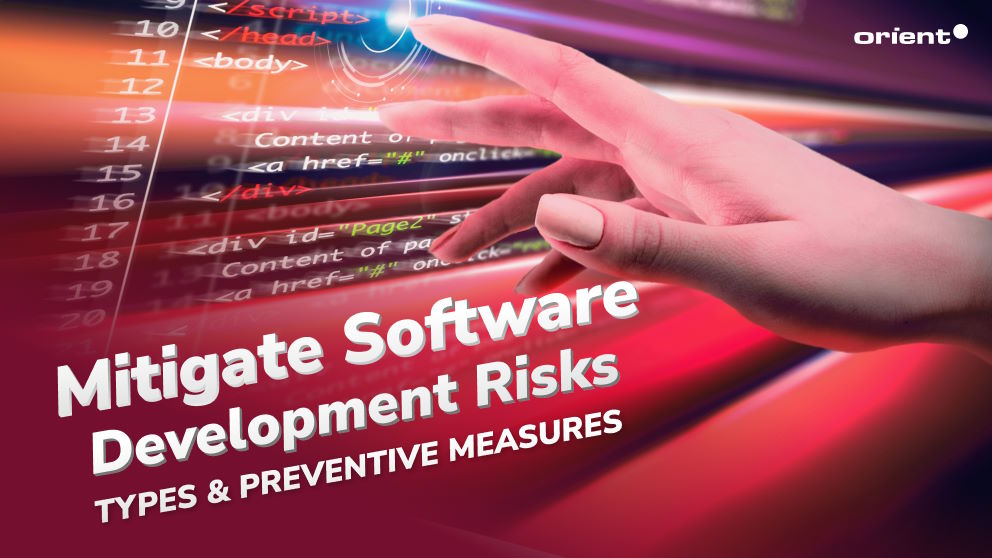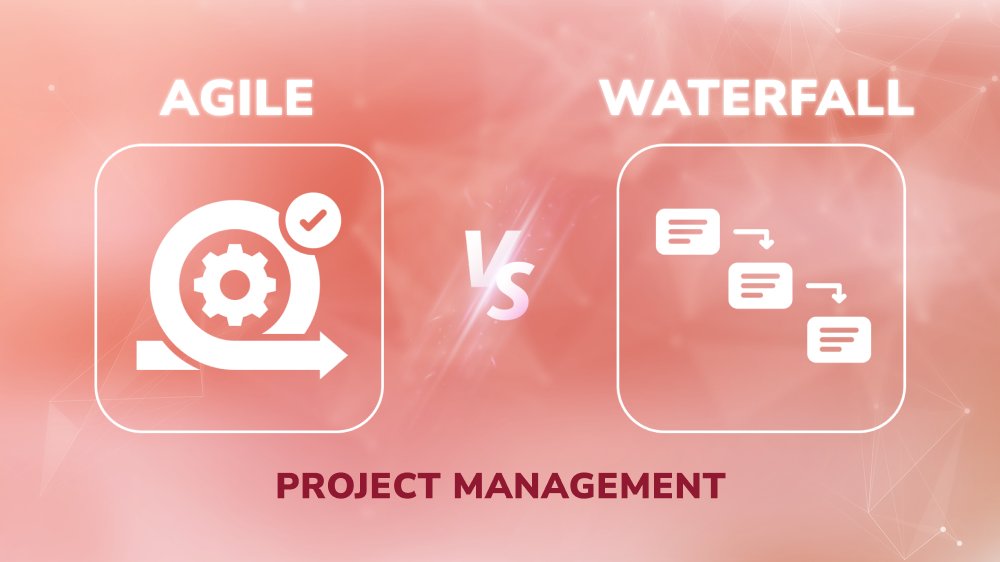How to Mitigate Software Development Risks – Types & Preventive Measures

Content Map
More chaptersNo software project is immune to risks. Ordinarily, a software development process, which is a long series of phases and activities, can be fraught with lots of uncertainties and unforeseen events. These potential missteps may lead to project delay or compromise and negatively sabotage the outcomes.
The nature of these untoward happenings is as constant as change. They can be either internal or external risks. Such risks, if left unaddressed, can culminate in catastrophic consequences, tarnishing reputations, draining resources, and even resulting in outright project failure. According to Statista report, the global expenditure on handling integrated risk management within the IT sector reached a staggering figure of approximately $5.473 billion in 2021.
Ignoring the software project risks means you are gambling the fate of your “spirit child.” Can you afford to leave things in the hands of chance? Good news! Most of the common software development risks can be prevented or contained with a quick response plan. This writing is a rundown of various categories of risks involved in developing software and how to resolve them before they hinder project success.
The Most Common Risks in Software Development Projects

From the standpoint of a project manager or business owner, the significance of risk analysis and management cannot be overstated. To tackle any software development risk, you need to know its ins and outs first and detect it from the outset. Not all potential risks are equal. Each may jeopardize software projects in a different way. So, there need to be different approaches to mitigate them efficiently.
Technical Risks
The first and foremost type of risk that can primarily make projects fail is technical bottlenecks – which are rooted in the lack of technical knowledge or expertise within the project development team, inconsistencies in technical requirements, and inefficient technological usage.
The risks related to technical aspects can be detrimental to the software product itself, culminating in poor coding, the emergence of bugs, technical debts, performance issues, integration issues, unstable development environments, or incomplete test coverage.
Mitigation: To manage risks at this point, project managers and software developers need a thorough plan and intense oversight to avoid issues early in the development cycle and avert them once they arise:
- Employ the right resources and team structure with the required skills and technical know-how.
- Have focus groups to gather user stories and identify the bottlenecks right in the pre-planning stage.
- Thoroughly analyze and define technical requirements before starting development.
- Implement regular code reviews, QA testing (beta testing, user acceptance testing, etc.), and debugging processes.
- Fortify the software development team by proper training and mentoring.
- Utilize efficient technology stacks and tools for the project.
- Conduct continuous integration to avoid last-minute surprises.
- Test the water by developing MVP (Minimum Viable Product) and getting feedback before committing to long-term development.
Budget Risks
Undoubtedly, software risks related to monetary concerns are the second most significant also dangerous factor hindering a project’s success, namely budget overrun. In any case, the financial aspect of an IT project is the last thing business owners can afford to compromise as it straightforwardly impacts the profit margin and, consequently, the scalability of a business.
That’s why project budget allocation must always be managed and aligned with the software development goals and project plan. If not, mismanagement of resources and funds may result in untoward financial damage and loss.
In fact, there are numerous factors affecting the overall development costs, so the root causes for budget constraint or overrun are varied. Primarily, it is due to inaccurate estimations, project scope expansion, or lack of control over the project timeline.
Mitigation: Project managers need to maintain constant control over the whole picture of their project’s financial conditions.
- Develop a realistic budget estimation with contingencies included.
- Plan to allocate enough resources and funds for each development phase in the project plan.
- Prioritize tasks and outsource non-core ones to third-party vendors or freelancers.
- Communicate and manage the project scope carefully with stakeholders.
- Monitor expenses at every stage and adjust accordingly in a timely manner if necessary.
Schedule Risks
In the software development industry, speed is the opportunity. A product is likely to seize a better chance in the market if rolled out earlier than its competitors. Delays certainly pose budgetary risks. Yet, there’s a caveat. It may backfire if the project is rushed to complete within a set timeline despite the complexity of its requirements and quality. At this point, schedule slippage is the problem of failing to plan the project timeline, budget, and development process accurately and realistically, and the rightful result is a chain of consequences, such as aggressive deadlines and delivery delays.
Indeed, missed deadlines are the red flags in software development projects; however, if we trace back to the roots, we may figure out various reasons in addition to planning, like poor time management, lack of coordination between teams, unrealistic expectations from clients, or underestimating the project’s complexity. Thus, project managers and developers are to be very cautious about time management.
Mitigation: Fortunately, schedule risks are manageable:
- Develop a realistic timeline with enough room for contingencies.
- Employ Agile methodologies like Scrum or Kanban, adapting to real-time changes.
- Plan regular stand-up meetings and set up seamless communication channels with the software team and stakeholders.
Operational and Organizational Risks

Also known as procedural risks, these potential perils occur in the day-to-day operations of a team during the entire software development lifecycle (SDLC). These are the most underestimated yet complicated ones that may disrupt the project at any stage.
Operational risks often manifest as inefficient processes, inadequate team communication and collaboration, lack of proper project documentation, lack of stakeholder engagement, unclear roles and responsibilities, or even conflicts among team members.
Mitigation: Put these practices in place if you strive to avoid the risks of poor project management or miscommunication:
- Devise a comprehensive project management plan.
- Foster collaboration and communication among teams using tools like Slack, Teams, or Asana.
- Use project management software tools to track project progress, manage tasks and resources, and generate insightful reports.
- Hold frequent meetings with the team and stakeholders to gather feedback and address potential problems.
- Establish clear roles and responsibilities for each and every team member.
Programmatic Risks
Programmatic risks are not rooted in technical glitches but rather stem from factors beyond the software development team’s control. These external risks include compliance challenges, fund cuts, market shifts, or volatile changes in the technology landscape.
These risks are often unforeseen and can cause significant disruption to the project in terms of expenditure, schedule, and delivery if left unaddressed. Unfortunately, most of them are unavoidable, so you cannot prevent them from happening, yet you can prepare for the worst scenarios.
Mitigation:
- Forecast and keep track of industry trends and changes in regulations or compliance standards.
- Be prepared to adapt and pivot when necessary.
- Have contingency plans ready for any potential disruption caused by external factors.
Security Risks
As cyber-attacks escalate inescapably, businesses must remain vigilant about security matters throughout their software development process. Intangible vulnerabilities and loopholes could exist in your SDLC, ripe for exploitation by hackers. Neglecting or being unable to identify risks could bring disastrous consequences like the compromise of confidential business data, user information, or even financial loss.
Mitigation: Any software company must prioritize security measures throughout the entire software development process, including:
- Conduct regular security audits and tests.
- Implement secure coding practices.
- Implement encryption and other rigorous security protocols.
- Provide training and awareness to employees on cybersecurity best practices, particularly the new team members.
- Invite an expert team on software development security matters to support conducting risk assessment throughout.
- Stay abreast with the latest security threats and trends in the industry.
People Risks
In the context of an IT project, the human resource factor is of utmost importance. A software company or project may trip over various issues associated with manpower. These risks could range from the shortage of qualified personnel to wrong hires or novice developers.
Or the most common nerve-wracking problem is the unexpected leave of key project developers, which may cause a personnel crisis as well as a chain of sequels, especially if project knowledge is not documented or handed over properly.
Mitigation: We all know that nothing can delay or derail a project faster and easier than shifts in human resources. For that reason, stability in the project team is vital to ensure project success.
- Plan backup resources in case of absences.
- Employ flexible staffing models – freelancers, outsourced staff, or dedicated teams.
- Onboard new or replacement stakeholders with a learning guide.
- Elaborate documentation processes and procedures, such as knowledge transfer sessions at the time of departure.
- Cultivate a healthy company culture that reduces employee turnover.
- Foster learning mindsets and mentorship within your team, creating opportunities for key people to share knowledge and for new faces and juniors to grow.
- Conduct regular performance assessments to identify areas of improvement.
Tips for an Efficient Risk Management Strategy for Your Software Development Project

Regrettably, the risks in software development are far more complicated; hence, you may not have seen all of them yet. There can be more challenges in developing software, varying case by case on the project costs, size, complexity, team structure, location, and many other factors. Therefore, you are unable to tackle the problems without a plan.
Failure to come up with a good enough strategy can be considered a risk as well. So, we would like you to put your mind and soul into crafting a well-thought-out risk management plan of your own. Perhaps, some tips should be useful:
Prioritize Risks According to Their Urgency
Risks happening in different periods of time bring forth different degrees of damage. In the ideal scenario, you strive to handle all at once. But in reality, it is not that simple.
In most cases, you cannot avoid prioritizing risks according to how risky they are or, in other words, their severity. You should make a list of detected issues, break them down, assess them in terms of urgency and likelihood of occurrence, and calculate the potential repercussions.
Once sorted, you have good reasons to determine the order of dealing with risks. The risk that could cause the most impact on the project should be taken care of first. This is how you manage your problems efficiently and in a timely manner, even before they manifest.
Include Risk Strategy in Project Planning
The plan serves as the lifeblood of any software development project, delineating a clear trajectory toward the end goal right from the outset. It’s crucial that the task of identifying and evaluating risks is embedded within this planning phase itself.
Risks can emerge at any point in the project lifecycle, so early planning for them allows for more effective and efficient handling of potential pitfalls. Above all, it is vital to weave a robust risk management strategy into the fabric of your overall project plan as soon as possible. This ensures that risk management becomes an inherent part of the development journey instead of being an auxiliary consideration. By doing so, you are positioned to proactively spot and address risks rather than adopting a reactive stance of mitigating impacts after they have already occurred.
Always Stay in the Loop of Communication
Efficient communication is key to any successful project, and adequate risk management is no exception. It is essential to keep your team on the same page and ensure everyone understands their roles and responsibilities.
Project managers can have daily stand-ups or routine meetings to share updates on risk management progress, discuss any new risks or modifications to existing ones, and assign action items. Also, transparent communication channels are required to simplify and streamline the exchange of information. Fostering such an environment cultivates a collective sense of responsibility toward mitigating risks.
Frequently Review and Update Your Risk Management Plan
Your risk management strategy requires consistent review and revision. As your project evolves, fresh risks may surface, while pre-existing ones may become irrelevant or escalate in severity. Hence, it is essential to continuously assess the efficacy of your risk management plan and make necessary adjustments to mitigate any potential impacts that could derail your project’s success.
Poor risk management is a dead end for your project, so don’t take any chances.
As you can see, there is a myriad of nitty-gritty notes to remember and things to be cautious about; still, the rate of risks and unforeseen incidents is not zero. But don’t be weary; there is always help that you can use – an IT partner. This is the one who can provide you with adequate resources accurately and timely, support you by giving advice from technical and business points of view, and also aid in auditing your project with an objective eye and no bias. It is Orient Software – a top-tier IT outsourcing company that makes the right partner. Contact us today for more info and further discussion.







